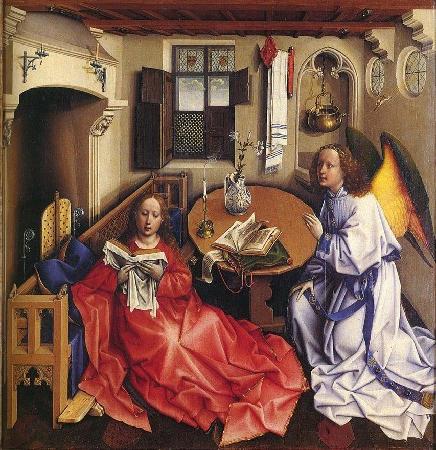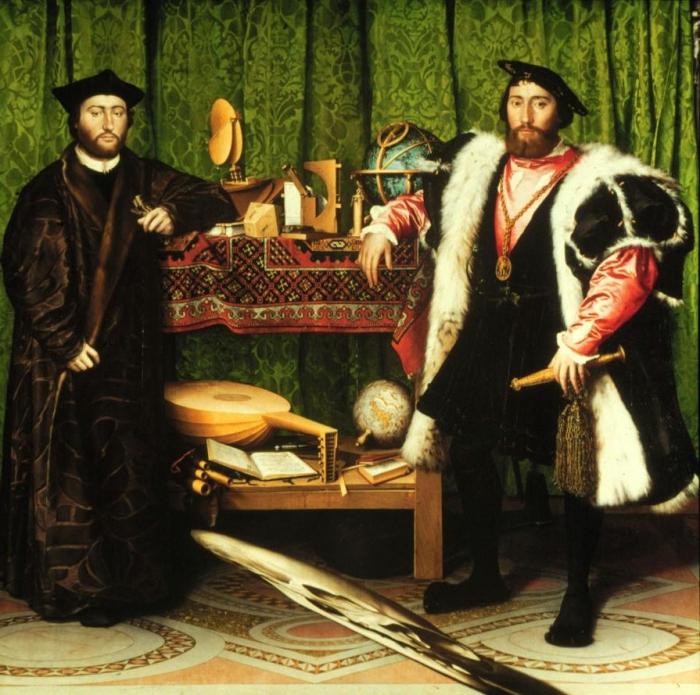The term "Renaissance" ("rinascita") itself belongs to art historian Giorgio Vasari. Later, the word was picked up by the French and transformed into Renaissance (Renaissance) - this is also called this period. Its time frame is difficult to determine: it is believed that it began with the great plague of 1347 and ended with the advent of the New Time, with the first bourgeois revolution. What exactly revived this period? Vasari believed that the spirit of antiquity, the wisdom of the Greek philosophers and the ancient Roman culture. All this flourished in Italy after the "Dark Ages" - so the historian christened the period of the Middle Ages. The Transalpine or Northern Renaissance came much later than Italian, and has its own inherent features.

To the north of the Alps in the territory of Western and Central Europe , Gothic reigns in culture for a long time, reaching its highest peak in the 14th century (“Flaming Gothic”). However, at the turn of the XIV and XV centuries in Burgundy, painters and sculptors begin to appear, who depart from the canons of sophisticated Gothic. This is, first of all, the Limburg brothers and the sculptor K. Slyuter. At that time, the Duchy of Burgundy extended far beyond the borders of the present French province and covered Belgium and the Netherlands. Therefore, it is not surprising that the Northern Renaissance was most pronounced in these countries.

If scientists associate the beginning of the Italian Renaissance with the fall of Constantinople and the arrival in Italy of a large number of refugees from Byzantium, who brought Greek culture with them, then countries in which the Northern Renaissance came a century later - the Netherlands, Germany, France, England and others for a long time preserved precisely medieval worldview. If in Italy the philosophy of the masses was anthropocentrism, then in the north of the Alps - pantheism.
Pantheism claims that God is poured in nature, and therefore the surrounding landscape is worthy of perpetuation on canvas as God's attribute. In the Italian Renaissance, nature is idealized, deprived of specifically realistic details and often serves only as a background for a portrait. The Northern Renaissance, trying to capture the real views, gives rise to an independent genre in painting - landscape. Especially this trend in art flourished under the brush of the German masters A. Dürer, L. Cranach A. Altdorfer, Frenchman J. Fouquet, Dutchman I. Patinir.

Portrait is another genre where the Northern Renaissance was most clearly manifested. Artists G. Holbein the Younger and Dürer in Germany, Rogier van der Weyden and Jan van Eyck in the Netherlands, J. Clouet and F. Clouet, J. Fouquet in France are trying to convey not the physical beauty of the face, but the psychology of the person depicted on the canvas, achieve huge emotional expressiveness of the image. Following the medieval aesthetics of the "ugly", masters often use the grotesque, which is most surpassed by Jerome Bosch.
The second genre that spawned the Northern Renaissance is everyday scenes. In Italy, the Church, which wanted to see paintings on biblical subjects, was a major customer of art. In the Netherlands, the bourgeois class, which is increasingly playing the political arena, is taking over: the merchants guilds and craft workshops order their portraits from artists against the backdrop of their hometown, which, combined with the flourishing of the landscape, generates genre scenes. The largest master of everyday scenes is Peter Brueghel the Elder, also called “Muzhitsky”, because he liked to depict scenes from peasant life. For him and other "small Dutch" is characterized by extraordinary virtuosity and careful drawing of details.